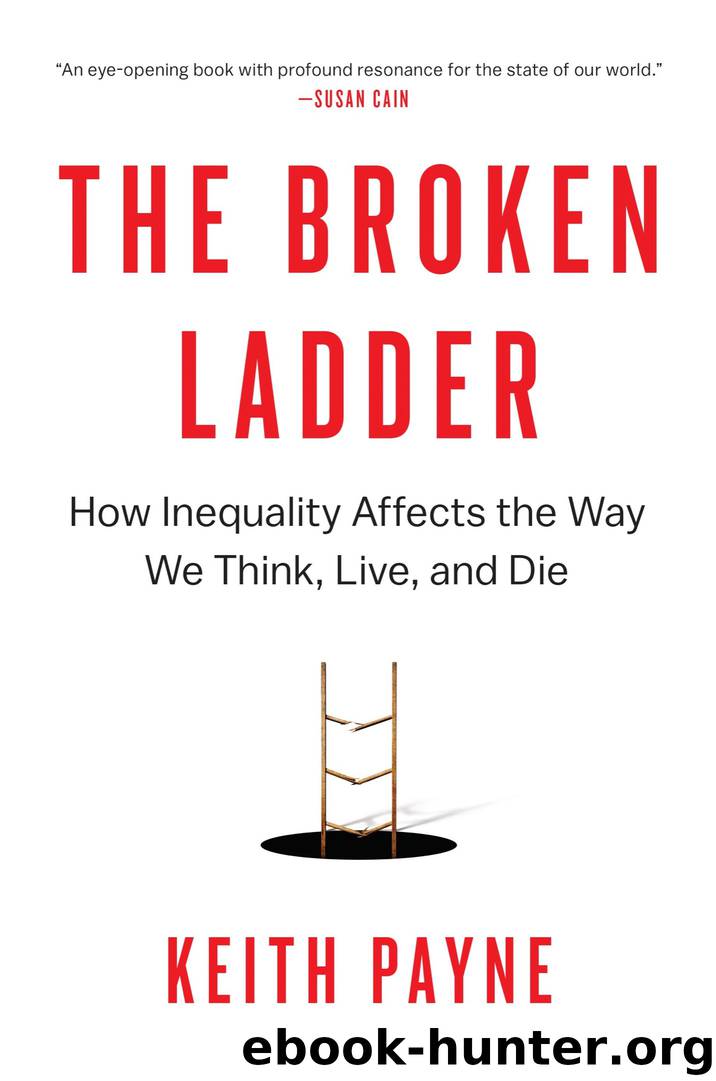The Broken Ladder by Keith Payne

Author:Keith Payne
Language: eng
Format: epub
Publisher: Penguin Publishing Group
Published: 2017-05-08T17:00:09+00:00
Chapter 6
God, Conspiracies, and the Language of the Angels
Why People Believe What They Need to Believe
What would you do with $28,000? Buy a new car? Put a down payment on a house? Pay off student loans? Fortunately for Diane Duyser of Fort Lauderdale, someone chose to spend his $28,000 on Diane’s grilled cheese sandwich. It wasn’t just any sandwich, though—this one had the face of the Virgin Mary on it. It turns out that these kinds of apparitions are everywhere. Villagers in Russia worship the image of Jesus in the bark of a birch tree. A Welsh family saw Christ in a smear of Marmite stuck to the lid of the jar. And a New York man found the Lord in his navel orange. In recent years the Holy Family has made appearances in Cheetos, pretzels, Funyuns, and breakfast tacos. It was no grilled cheese, but the Funyun sold for $600.
This tendency to see patterns in randomness is called pareidolia. It’s not a new phenomenon. David Hume noted in the eighteenth century that “there is an universal tendency among mankind to conceive all beings like themselves, and to transfer to every object, those qualities, with which they are familiarly acquainted . . . We find human faces in the moon, armies in the clouds; and by a natural propensity, if not corrected by experience and reflection, ascribe malice or good-will to every thing, that hurts or pleases us.”
Why, exactly, do people have this “universal tendency” to see deities in their snack foods? As we will learn, these visions have less to do with the spirit world than with the minds of the individuals who experience them. But these people are not crazy. On the contrary, they are engaging in an activity that we all do every day, one that brings order and sanity to our lives. Randomness and chaos feel threatening, but orderly patterns are reassuring, helping us feel that the world is predictable, trustworthy, and controllable. When people detect patterns in noise, they are extracting meaning from a world that has too few bright lines and too many gray areas. Of course, we do not see just any patterns. Faces are especially common, because faces are especially informative to us, and the faces of religious icons are even more evocative. When a sense of meaning is what we are looking for, we tend toward the epic. The ancient Greeks looked up at the stars and saw constellations of gods and heroes, not errand boys.
Figure 6.1. How easily you see a face in this cloud depends on your needs at the moment. Wanda Hartwigsen/National Oceanic and Atmospheric Administration/Department of Commerce
Download
This site does not store any files on its server. We only index and link to content provided by other sites. Please contact the content providers to delete copyright contents if any and email us, we'll remove relevant links or contents immediately.
| Anthropology | Archaeology |
| Philosophy | Politics & Government |
| Social Sciences | Sociology |
| Women's Studies |
Nudge - Improving Decisions about Health, Wealth, and Happiness by Thaler Sunstein(7273)
iGen by Jean M. Twenge(5187)
The Fire Next Time by James Baldwin(5041)
Adulting by Kelly Williams Brown(4267)
The Hacking of the American Mind by Robert H. Lustig(4109)
The Sports Rules Book by Human Kinetics(4097)
The Ethical Slut by Janet W. Hardy(4048)
Captivate by Vanessa Van Edwards(3734)
Mummy Knew by Lisa James(3531)
In a Sunburned Country by Bill Bryson(3387)
The Worm at the Core by Sheldon Solomon(3332)
Ants Among Elephants by Sujatha Gidla(3284)
Suicide: A Study in Sociology by Emile Durkheim(2914)
The Slow Fix: Solve Problems, Work Smarter, and Live Better In a World Addicted to Speed by Carl Honore(2852)
The 48 laws of power by Robert Greene & Joost Elffers(2828)
Humans of New York by Brandon Stanton(2696)
Handbook of Forensic Sociology and Psychology by Stephen J. Morewitz & Mark L. Goldstein(2611)
The Happy Hooker by Xaviera Hollander(2588)
The Tipping Point by Malcolm Gladwell(2569)
